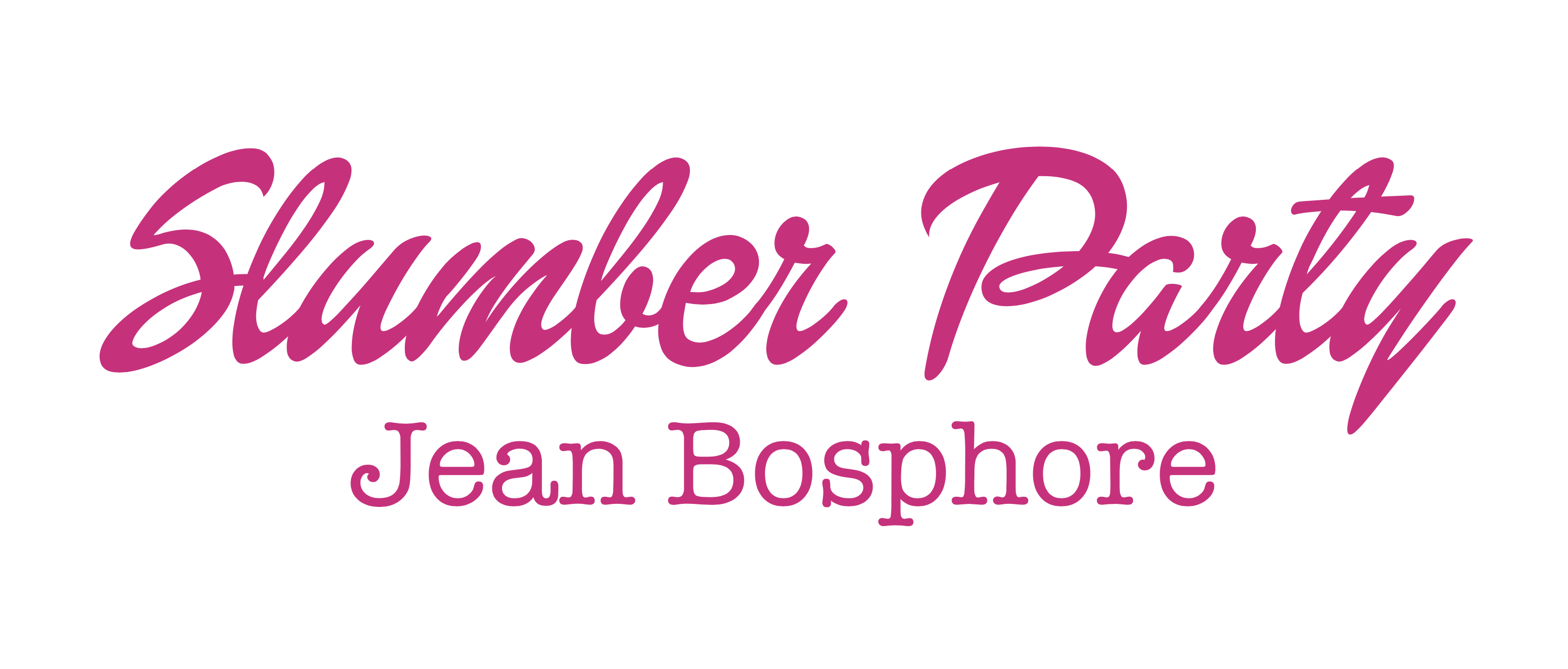 Baudelaire once said in L’art Philosophique, “What is pure art following modern conception ? It is creating a suggestive magic containing both the object and the subject, the artist’s external world and the artist himself”.
Baudelaire once said in L’art Philosophique, “What is pure art following modern conception ? It is creating a suggestive magic containing both the object and the subject, the artist’s external world and the artist himself”.
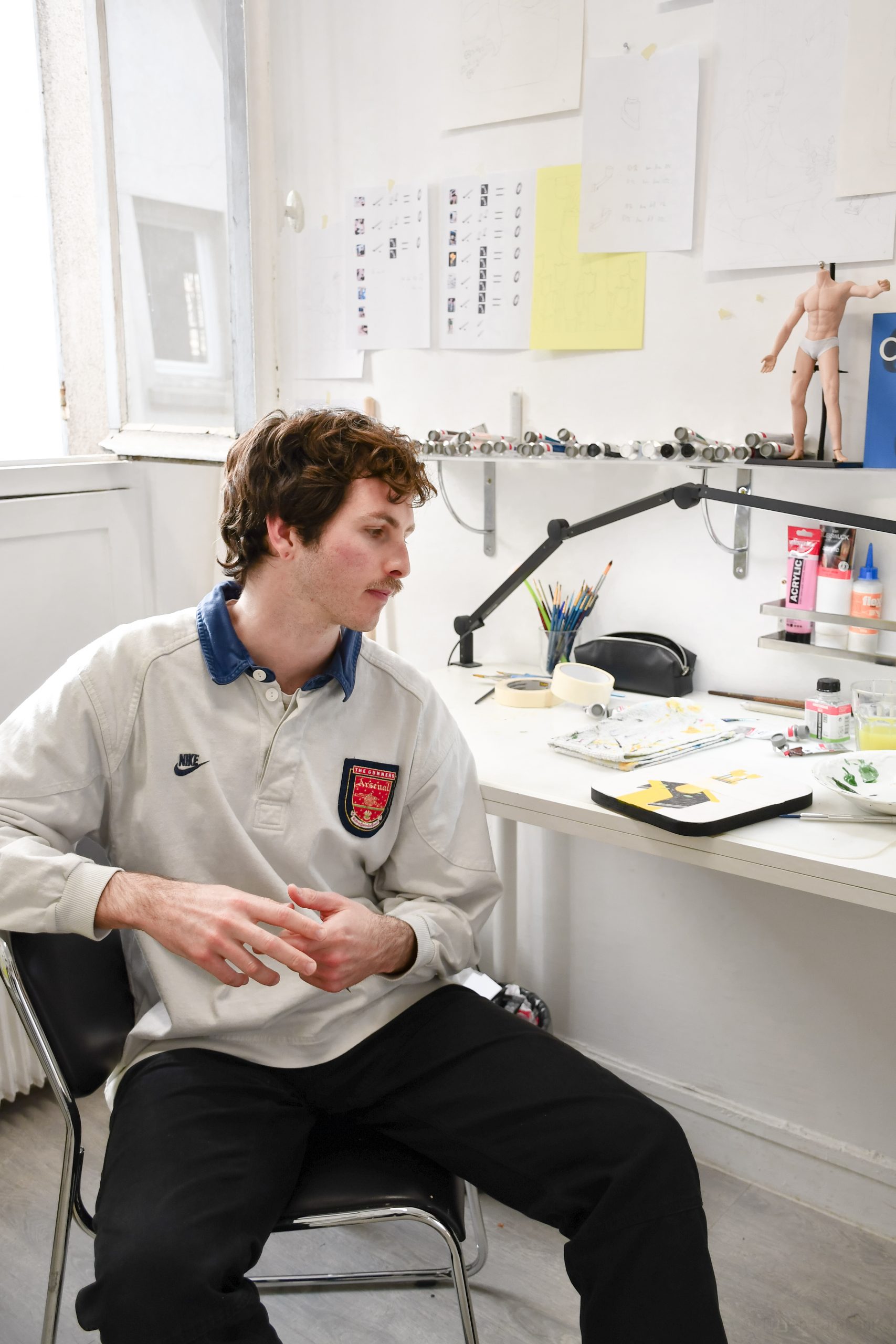
By combining an atemporal and universal vision with his own intimate imaginary, the artist invites us to a surrealist and enthralling journey. The plastic perfect masculine figures are placed in a dreamlike atmosphere, apparently devoid of narration, taking the traveler on a quest for the ideal beauty, which according to the Kantian conception, would come from a disinterested satisfaction for “what pleases universally without concept”. It is no coincidence if Jean Bosphore’s figures evoke antic Greek statuary, an essential source of inspiration for the artist, allowing him to question the very notion of beauty through the exploration of the human body and of what makes it alluring.
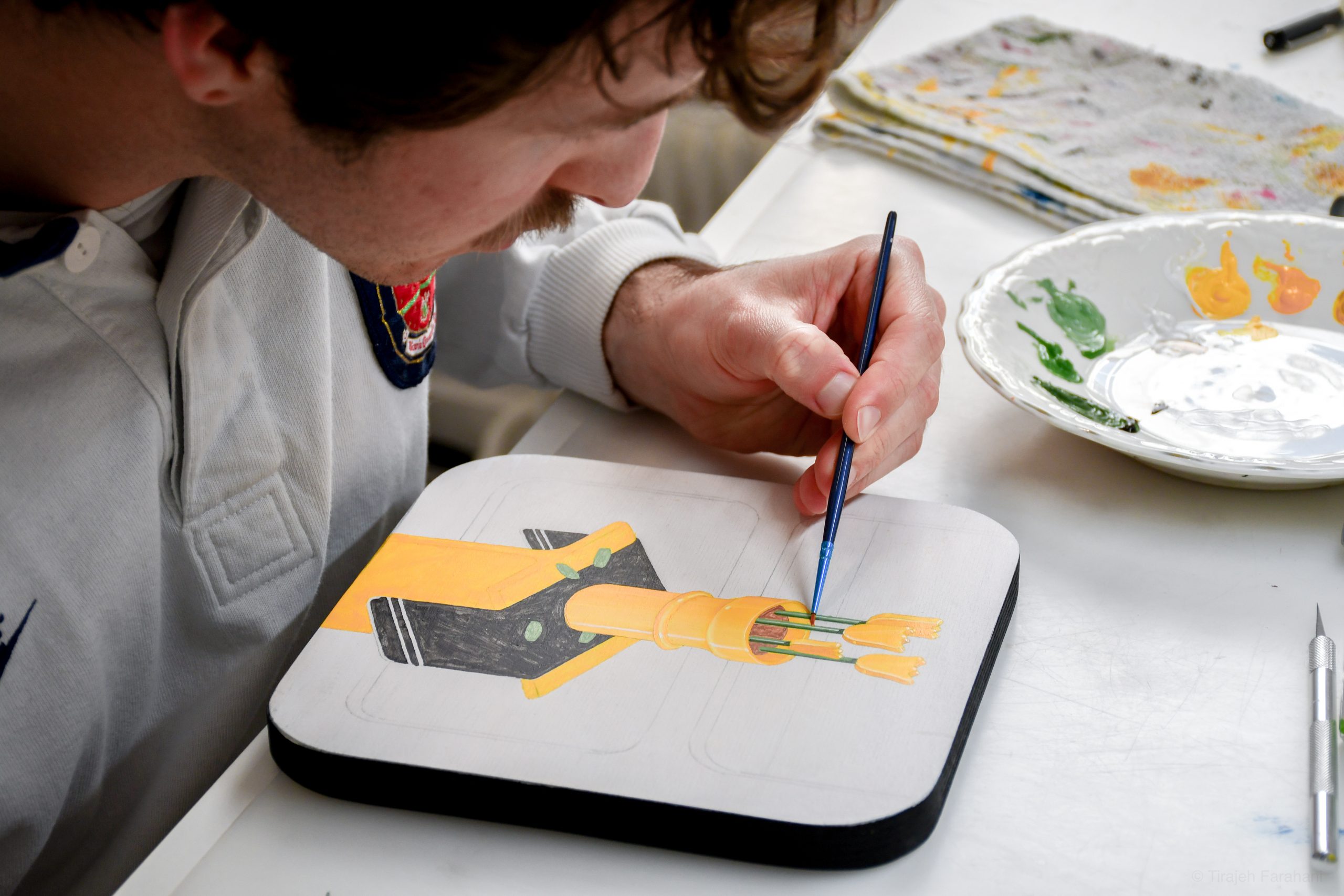
These phantasmagorical silhouettes harmoniously fit in a completely recomposed universe, based on the artist’s memories and contemporary images. The artificial flowers with vivid colors for instance, form an eerie tempo that rhythm the compositions just like an haunting melody. The image of the modern man is tested by the dystopian and futuristic environment surrounding him, and the work is enriched by another reading, that of the critique of contemporary society that seems to be immutably dancing in an artificial night. In the absence of narration, the spectator tries to offer an imagined plot to the characters and objects, and the artwork thus finds its completion in the viewer’s mind.
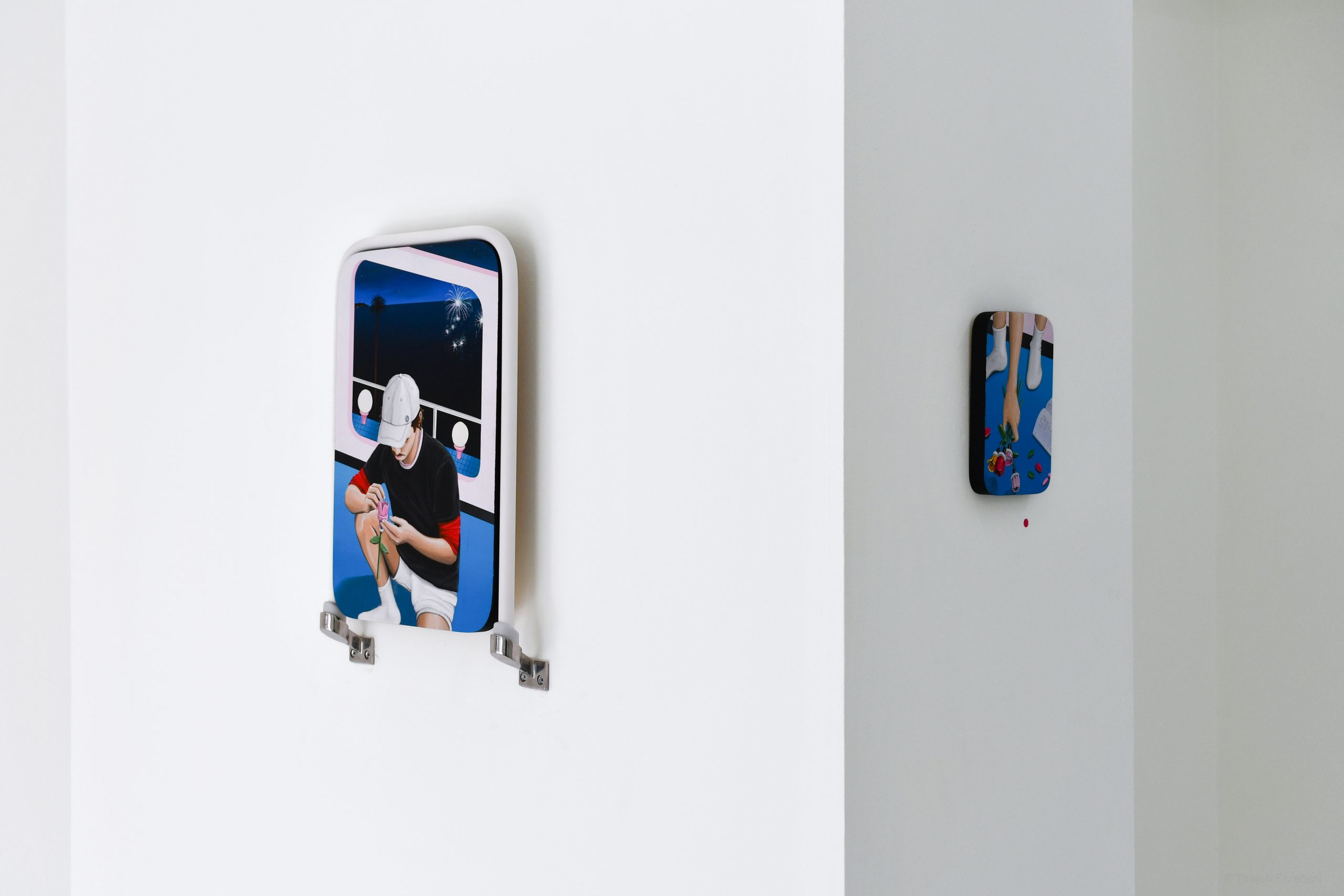
Despite a flatness exacerbated by flat areas of expressive color, Jean Bosphore manages to portray depths in his settings with talent, while playing on the ambivalence between interior and exterior. Besides, the original and narrow framing, often depriving us of a part of the image, emphasize this surrealist duality that exalts our uncomfortable sensation. This is the talent of Jean Bosphore : to reconcile contrasts in a unified whole thanks to a precise line and strong colors.
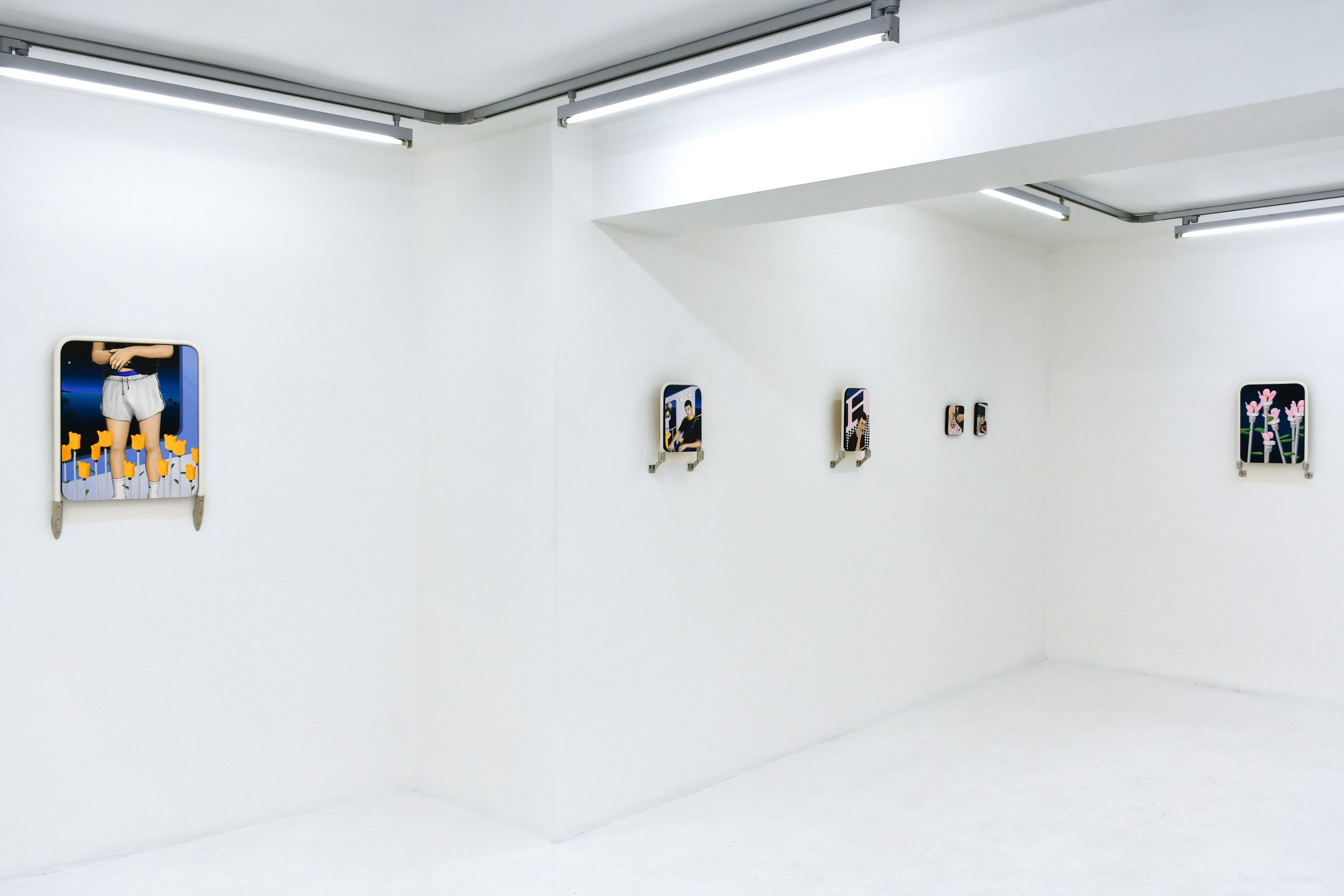
Those same tangy colored ranges that induce these perspective games. Just like David Hockney transformed a flat space into a tridimensional surface with large zones of pure color, Bosphore’s smooth and clean palette allow him to dig into the depths of his works. The point of views, often uncentered, allow the viewer to overlook the stage to better understand it. The reduced size of the works induce a notion of “object-painting”, enhanced by the choice of materials. The artist himself compares their shape to that of a smartphone or tablet. The importance of the industrial drawing technique is made visible through the significance of the line, but also by the process of integral conception of the work.
The painting is not confined to its support or frame, but includes them in order to form a cohesive whole. Ossip Brik, in the Russian socialist paper LEF explained in 1923 that “painting is not only the “work of art”, but the entirety of what makes the pictorial shaping of a way of life”. The geometric and normed contours of buildings also convoke soviet constructivist architecture in a fantasized vision that is more like a futuristic chimera than a proper copy.
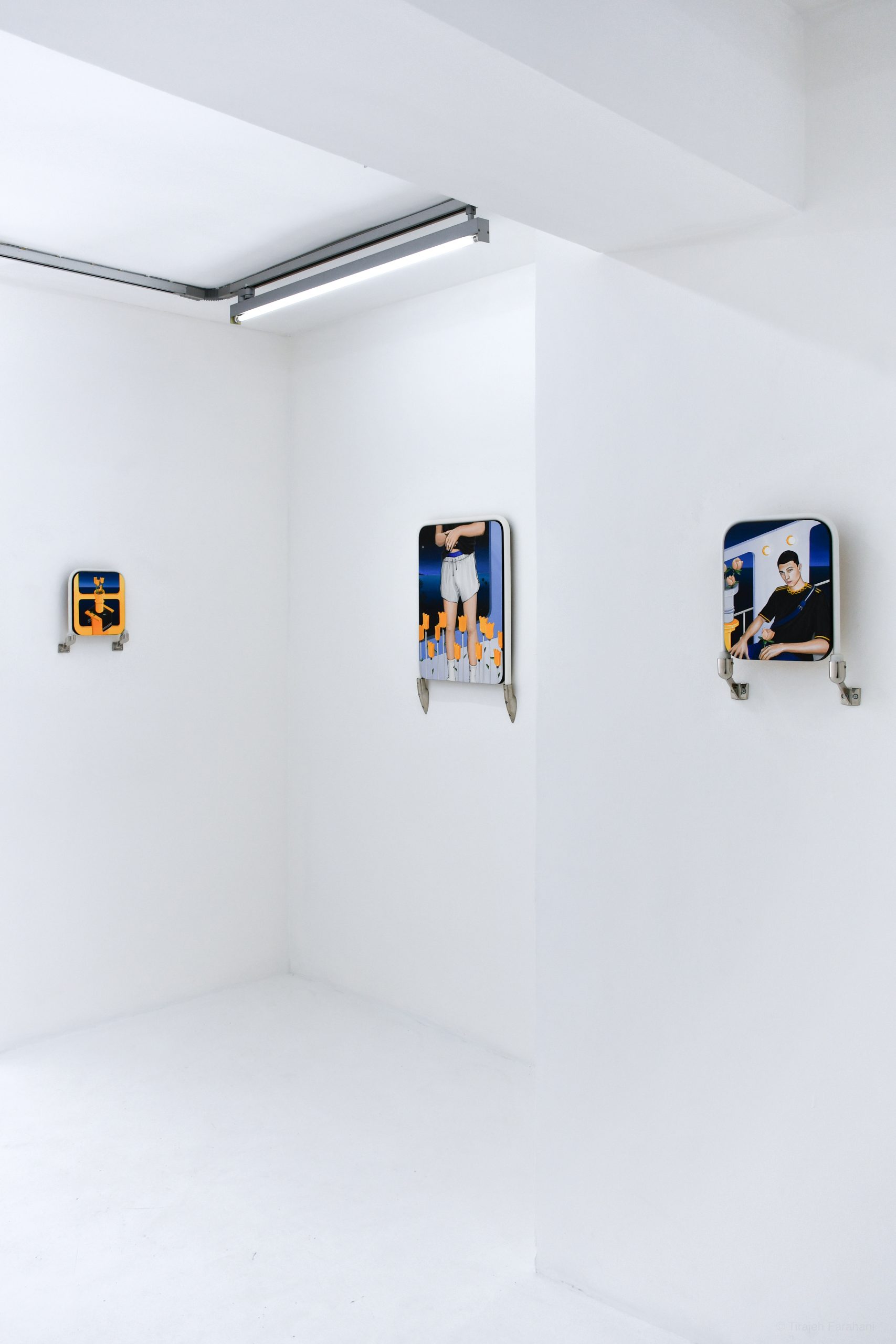
Bosphore’s silent climate undeniably summons the sci-fi universe, especially the futuristic constructions in Ridley Scott’s Blade Runner, inspired by the russian brutalist architecture for its sobriety and lack
of ornament.
Inès Molière